Ian Jarvis's Blog
May 29, 2025
HELLO DOLLY
February 23, 2025
CONJURING COINS
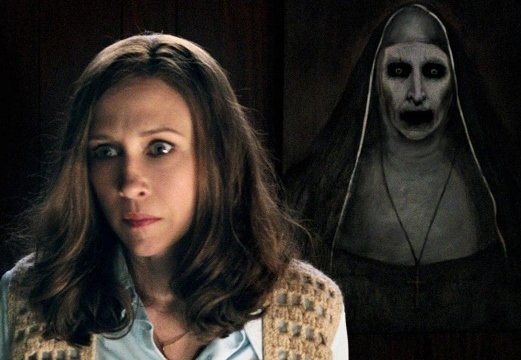
The famous Enfield poltergeist case of 1977 made it onto the cinema screens in 2016 as the Conjuring 2. If you’ve seen the other horror films by director James Wan, you can probably imagine how his take on the paranormal activity is a touch more sensational than the excellent 2015 screen version - the Enfield Haunting, a down-to-earth television dramatization with Timothy Spall and Matthew Macfadyen.
As with the first Conjuring film, Conjuring 2 follows the investigations of New England 'demonologists' Ed and Lorraine Warren, played by Patrick Wilson and Vera Farmiga. The picture above shows Lorraine about to meet one of the Enfield entities - imagine a meth-crazed Marilyn Manson joining the cast of Sister Act. Fortunately, these demonic types didn't appear in the council house until the Warrens got there, as I can't imagine how Timothy Spall's placid character Maurice Grosse would have coped with them.
Also, fortunately, they were never seen again after the Warrens left, although this movie suggests that Lorraine brought the Marilyn Manson entity to London from the hell house that was Amityville.
Yes, the Warrens were the researchers who investigated the infamous hauntings at Amityville and Lorraine was also the owner and ‘custodian’ of Annabelle, the possessed doll who starred in the 2014 film by the same name. After terrorising its owners, the doll was locked away in a special cabinet in Lorraine’s occult museum beneath her house in Monroe, Connecticut. Its evil is somehow contained in the glass case and it can hopefully do no more harm.
For some reason, the makers of the film didn’t feel the genuine Annabelle doll, seen here with Lorraine, looked scary enough and decided upon a new design. I honestly can’t think why.

The only problem is the design of the cabinet glass door, which has a warning sign saying: 'Positively Do Not Open'. Unfortunately, you can’t see the word 'Open' until the door has actually BEEN opened.
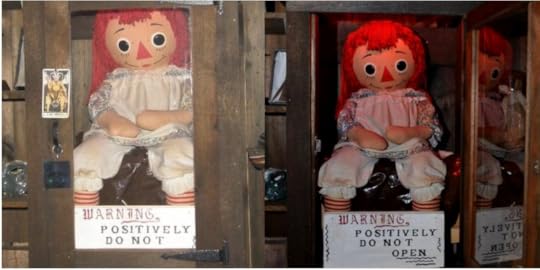
I met Lorraine and Ed back in 1984 at Borley, a tiny isolated village on the Suffolk/Essex border. This, of course, was the site of Borley Rectory, and the pair arrived late in the afternoon on a coach. This wasn't the spectral horse-drawn coach that has been seen galloping through the hamlet by many witnesses, but an air-conditioned 52 seater. They were leading a tour group of Americans on a paranormal journey of the British Isles, they’d visited various haunted hot spots, such as the Edinburgh Vaults and York’s Treasury House, and Borley was the much anticipated highlight.
After the rectory was demolished in 1944, the spirits moved over the road to Borley Church and I joined the tour group as they wandered quietly and excitedly around the old building hoping for glimpses of phenomena. This was back when the church wasn't permanently locked, the porch fitted with a metal security gate, and before visitors were actively deterred.

Lorraine and I talked at length about her interest in Borley. Here's what the New England Psychical Research website has to say about one of their visits...
Paranormal investigators Ed & Lorraine Warren documented their experience at Borley with clear photo evidence. Ed was able to capture the photo of the ghost of a monk, leafing though a book in the church. While Lorraine experienced a black mass moving past her with an undeniable evil energy. The photos revealed a nun in their presence.
Here are those very photos...
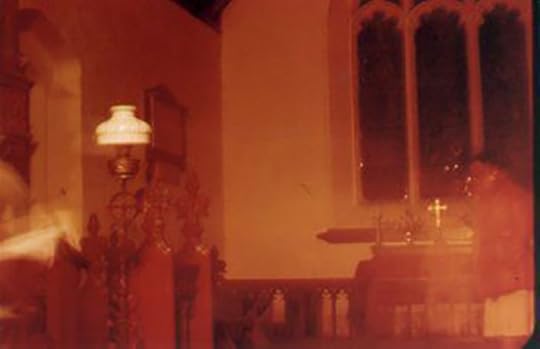
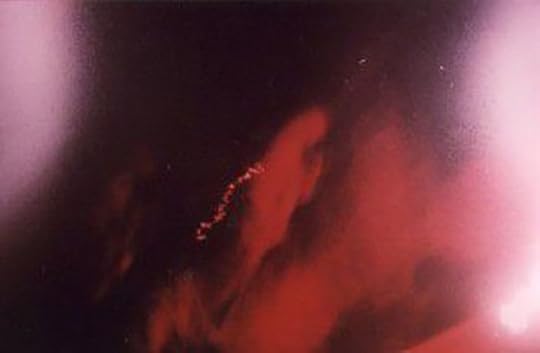
During this visit Lorraine also witnessed an ‘apport’, a rare supernatural event where an object literally appears out of thin air. In this case it had been an old pre-decimal penny that fell to the floor in front of them near the altar, an obvious sign from Harry Price, she claimed. Price wrote books about the Borley hauntings, Lorraine had spoken to him psychically on several occasions and the pair were, more or less, on first name terms.
This talk of old coins reminded me of the halfpenny I currently had in my pocket, given to me as a 2p coin by a barmaid in nearby Long Melford the previous evening.
As we were chatting, one of her group, a young man, suddenly spotted an old English halfpenny on the aisle carpet, pretty much identical to mine. Everyone agreed it hadn’t been there moments before, and picking it up, Lorraine realised it was another apport from Harry. If proof were needed, it was right there in the date on the coin – 1946, the year Price published the End of Borley Rectory, his second book on this place.
The halfpenny was a physical message from Harry, said Lorraine, to let us know he was there with us.

Incredible as this was, I couldn't help wondering why he didn't send a coin dated 1940, the year of his first (and more famous) rectory book, the Most Haunted House in England, or 1881, the year of his birth, or perhaps more pertinent, 1948, the year of his death. All in all, I felt 1946 was more likely to be a sign from the departed owner of Harrap & Co Ltd, the publishers of the End of Borley Rectory. As it turned out, this was pointless speculation, as Lorraine held the coin tightly and felt Harry's definite presence in the church with us. That and an overwhelming sensation of peace.
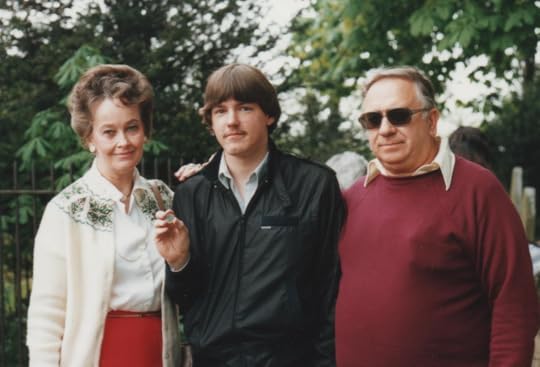
The picture shows Ed and Lorraine on either side of the young guy who noticed the coin. The paranormal apport now resides in Lorraine’s occult museum, close to the case containing the evil Annabelle.
Ed sadly passed away in 2006. I visited Connecticut in September 2016, three years before Lorraine's death in 2019. As my travels took me close to Monroe, I hoped to visit the museum which is open for public viewings if you book ahead. It would have been nice to see the coin again. On contacting the curator through the Warren's website beforehand, it turned out they charged £75 per person, the address isn't divulged until you pay the money, and it was emphasised that no one ever gets to meet Lorraine.
It was at this point I decided the Annabelle doll was just too scary for me, I bypassed Monroe and continued north to Salem instead.
We'll finish with an internet image of what the Hollywood Warrens would look like at Borley...
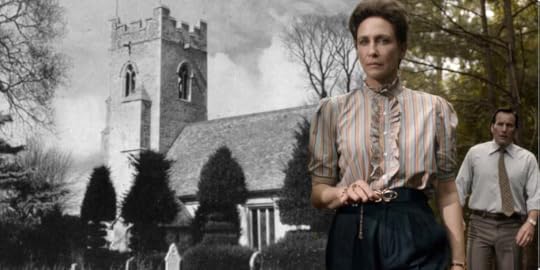
July 8, 2024
WHERE'S DRACULA?
Where did Bram Stoker write his celebrated novel, Dracula? Take a pictorial tour of the locations that inspired the book and the places where he set many of the scenes.
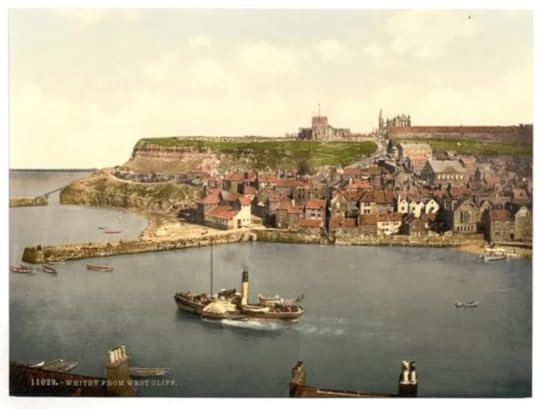
Dracula wasn't the first fictional vampire - before the Count, we had Sheridan le Fanu's Carmilla, for example (not to be confused with our current Queen) - but Bram Stoker's 1897 novel was certainly responsible for popularising these legendary creatures in literature and later in the cinema.

Dracula instantly established the myth of the suave gentleman vampire who could pass as human and mix with society, as opposed to the horrific mouldering corpses of mythology. George A. Romero did something very similar many decades later with the zombie, plucking these creatures from their Caribbean world of voodoo and giving them a complete makeover with a whole new set of rules. No one watching the modern zombies on television would even remotely connect them with voodoo rituals and jungle drums... and thanks to George, we all now know to avoid their bites and to to shoot them in the head.
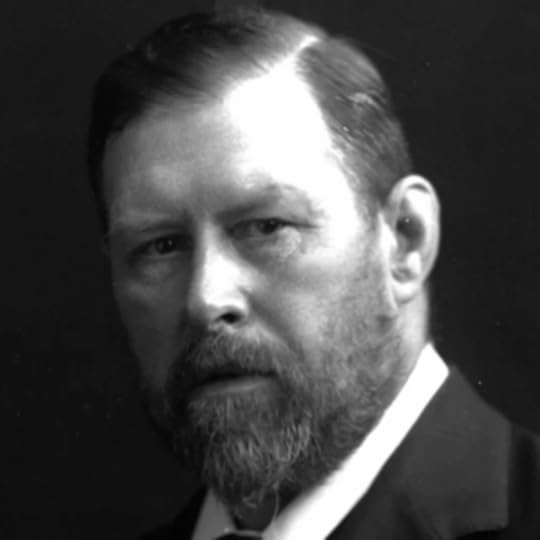
Unlike his hero, Jonathan Harker, Bram Stoker never actually travelled to Transylvania, but from 1894 he did holiday in Aberdeenshire on the eastern coast of Scotland, staying mostly at the Kilmarnock Arms Hotel in the small village of Cruden Bay. They still have the visitor's books with his signature on display under glass.
The first picture is the hotel in Stoker's time. Apart from double glazing , en-suite bathrooms and the price, nothing much has changed.

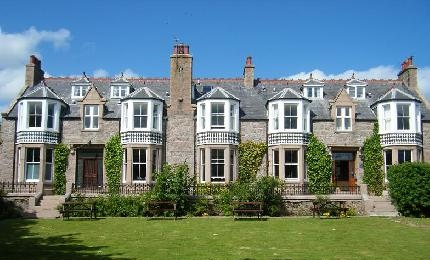
Never having visited Transylvania, Stoker obviously never saw an actual Carpathian castle, but he did see Slains. Isolated and windswept, the ruins of Slains Castle stand within easy walking distance of the Kilmarnock Arms, on the headland above Cruden Bay. Stoker was a guest there, following in the literary footsteps of Johnson and Boswell who stayed at the castle in 1773.
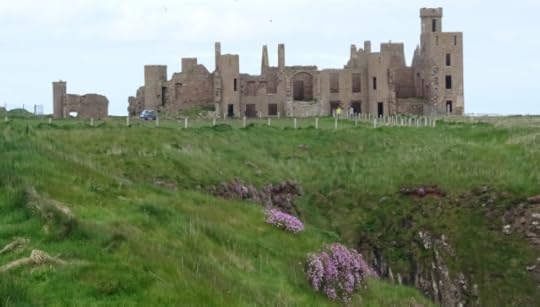

Begun in 1597, the place is a curious hotchpotch of periods, the final 1837 remodelling being in the Scottish Baronial style. Many people believe Slains was the inspiration for the Count’s Transylvanian castle at the head of the Borgo Pass, and the residents of Cruden Bay today refer to it as Castle Dracula. They even have a Dracula theme pub named the Slains Castle just down the coast at Aberdeen (run by the Eerie Pub Company).
Now a romantic clifftop ruin, with many stone chambers and passageways to explore, Slains is well worth a visit. Just park in the village and follow the signs - although a visit in the near future could be a good idea. For many years, developers have been attempting to turn the place into upmarket apartments. So far (2024) this hasn't happened, but one day the castle could be private property.

Whitby is now famous as the setting for many scenes in Dracula, and Stoker first visited this small Yorkshire fishing town in 1890. He stayed for several weeks on the West Cliff’s Royal Crescent at number 6, a guesthouse run by Mrs. Emma Veazey. This is the central cream-coloured house in the second picture. A commemorative blue plaque is now fixed to the wall and the place has been named Bram's View. The current owner lets out Stoker's rooms as a holiday flat and you can stay there. The furniture is of the period (but thankfully not the bed or bathroom) and a well-thumbed copy of Dracula sits on the windowsill for guests to peruse.


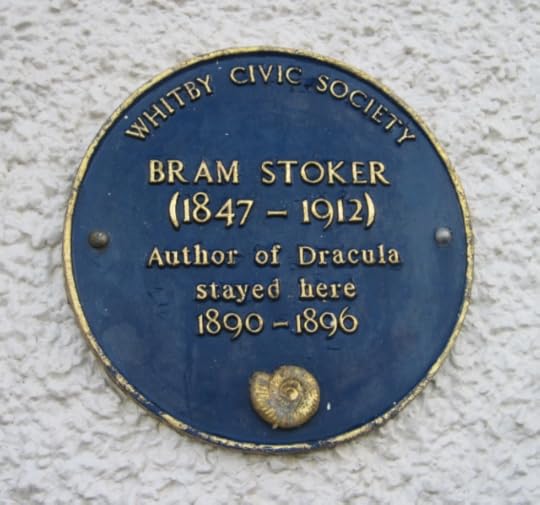
Stoker's 1890 stay was the first of many there to research and write his book. Three ladies from Hertford were fellow guests at Mrs. Veazey's - Isabel and Marjorie Smith and their friend Miss Stokes - and many claim Stoker based the characters of Lucy, Mina, and Lucy's mother Mrs Westenra on these women. In the novel, these three characters also stay on the Crescent and Lucy’s bedroom window is visited by a huge bat.

Completed in 1884, the Larpool viaduct stands a couple of miles up the Esk river valley from Whitby. Bram Stoker used to travel over this amazing construction by steam train on his visits to the town and it gets a mention in his novel when Mina Harker talks about it in her journal - “The little river, the Esk, runs through a deep valley, which broadens out as it comes near the harbour. A great viaduct runs across, with high piers, through which the view seems somehow further away than it really is.”

The old viaduct is now a very high footpath and cycle track.
Stoker carried out much of his research into East European folklore at Whitby library on the edge of the harbour. The place is unrecognisable as a library now as, for the past fifty years, it's been the Quayside fish and chip restaurant. The huge stone with the engraved word 'LIBRARY' is still there beneath that upper Quayside sign.
On an unrelated note, the Quayside has many awards for 'best fish and chips' and, when television programmes are made about Whitby, pretty much every celebrity presenter is filmed eating there.
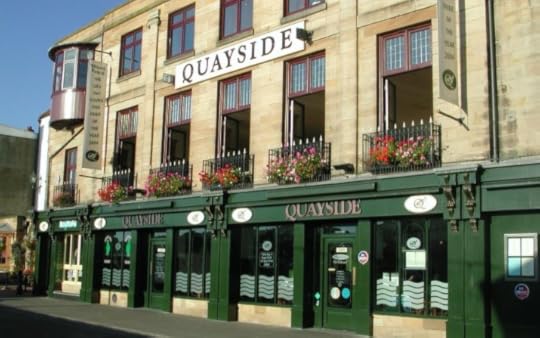
Stoker borrowed a 1820 book from this library by William Wilkinson entitled: An Account of the Principalities of Wallachia and Moldavia. This is where he first came across the name Vlad Dracula, the Impaler.
A bench on the West Cliff overlooks Whitby harbour, a favourite spot for Stoker, where he would sit and write up his library notes. The view hasn’t changed in the slightest since those Victorian days. The old postcard below shows how it looked back then, and the seat is now fitted with a commemorative plaque. The modern picture shows a sign for one of the Dracula walks.
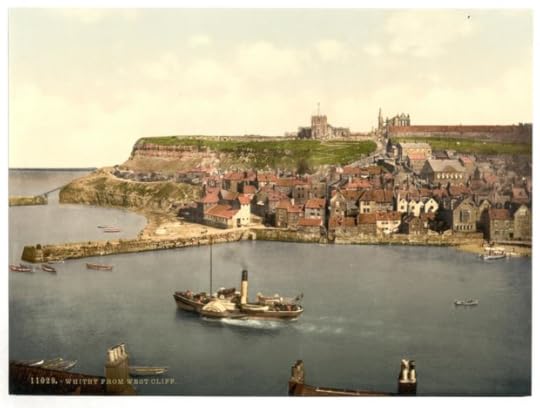

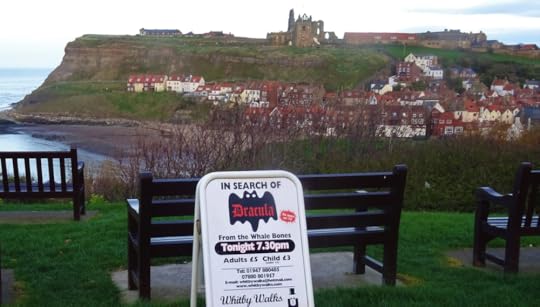
In the library he also read the Whitby Gazette report from 1885 about the Russian schooner Dmitri of Navra, which made its way into the harbour for shelter during a storm and was wrecked on the small beach called Tate Hill Sands. Stoker uses this story as Dracula’s arrival, changing the Dmitri from Navra to the Demeter from Varna. The following picture is by the famed Whitby photographer Frank Meadow Sutcliffe (Stoker bought a copy) and the next shot shows the same spot today. Again, very little has changed.


St Mary’s Churchyard, high up on the east cliff, is where Stoker often chatted with locals and collected tales of coastal legends and folklore. He enjoyed sitting on the lovely Victorian bench by the church, and had his character Mina sit here every day to write her journal. It’s also the spot where Lucy walks in a trance to be bitten by Dracula.
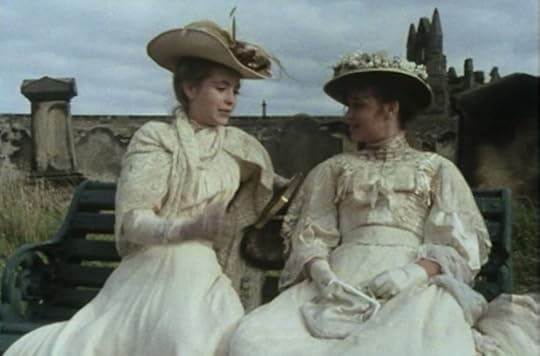
That same bench remained here until recent years – it was clearly there in 1977, when the BBC filmed Dracula with Louis Jourdan as the Count and Judi Bowker and Susan Penhaligon as Mina and Lucy. Unfortunately the council saw fit to replace it a few years ago with a steel thing that belongs in an inner-city bus station.

Stoker also heard many local legends whilst sitting here, which he wove into his story. One of these was the Barghest, a huge phantom hound with red eyes that haunts the North Yorkshire moors and cliffs around the fishing town. This was the inspiration for Dracula’s appearance as a large black dog which leaps from the Demeter and bounds up the famous steps to St. Mary’s churchyard.

The famous 199 steps that lead from the pier and the old part of town up to St Mary's church. Stoker climbed them countless times and features them several times in the novel.
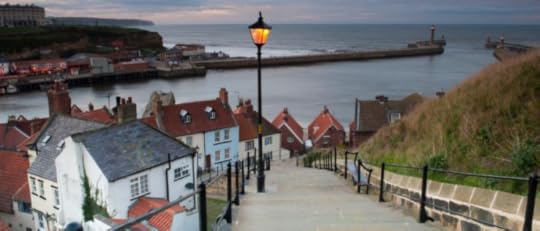
The book was published in 1897 and fans have been visiting these locations ever since, especially Whitby where the Goth weekends are now famous, or infamous, depending upon your point of view. The streets and the old cemetery above the town are filled with people in cloaks and full vampire make-up. Here's the permanent sign that you find on the inner door of St Mary's church. It says a lot.

Whitby loves its most famous fictional son and trades upon the connection. Here a sweet shop at the bottom of the 199 steps is selling homemade Dracula fudge, although you'd have thought they'd have taken the trouble to get the name right.
The Count would turn in his grave.
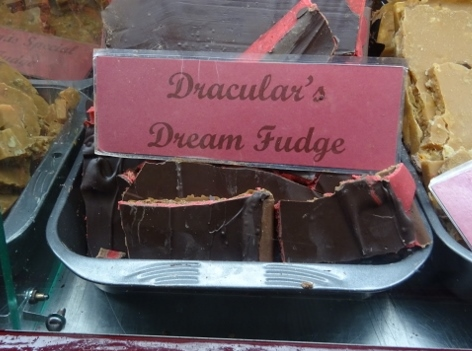
LOCATION COUNT
Where did Bram Stoker write his celebrated novel, Dracula? Take a pictorial tour of the locations that inspired the book and the places where he set many of the scenes.

Dracula wasn't the first fictional vampire - before the Count, we had Sheridan le Fanu's Carmilla, for example (not to be confused with our current Queen) - but Bram Stoker's 1897 novel was certainly responsible for popularising these legendary creatures in literature and later in the cinema.

Dracula instantly established the myth of the suave gentleman vampire who could pass as human and mix with society, as opposed to the horrific mouldering corpses of mythology. George A. Romero did something very similar many decades later with the zombie, plucking these creatures from their Caribbean world of voodoo and giving them a complete makeover with a whole new set of rules. No one watching the modern zombies on television would even remotely connect them with voodoo rituals and jungle drums... and thanks to George, we all now know to avoid their bites and to to shoot them in the head.

Bram Stoker never actually visited Transylvania, but from 1894 he did holiday in Aberdeenshire on the eastern coast of Scotland, staying mostly at the Kilmarnock Arms Hotel in the small village of Cruden Bay. They still have the visitor's books with his signature on display.
The first picture is the hotel in Stoker's time. Apart from double glazing , en-suite bathrooms and the price, nothing much has changed.


Isolated and windswept, the ruins of Slains Castle stand within walking distance of the hotel, on the headland above Cruden Bay. Stoker was a guest there, following in the literary footsteps of Johnson and Boswell who stayed at the castle in 1773.


Begun in 1597, the place is a curious hotchpotch of periods, the final 1837 remodelling being in the Scottish Baronial style. Many people believe Slains was the inspiration for the Count’s Transylvanian castle at the head of the Borgo Pass, and the residents of Cruden Bay today refer to it as Castle Dracula. They even have a Dracula theme pub named the Slains Castle just down the coast at Aberdeen (run by the Eerie Pub Company).
Now a romantic clifftop ruin, with many stone chambers and passageways to explore, Slains is well worth a visit. Just park in the village and follow the signs - although a visit in the near future could be a good idea. For many years, developers have been attempting to turn the place into upmarket apartments. So far (2024) this hasn't happened, but one day the castle could be private property.

Whitby is now famous as the setting for many scenes in Dracula, and Stoker first visited this small Yorkshire fishing town in 1890. He stayed for several weeks on the West Cliff’s Royal Crescent at number 6, a guesthouse run by Mrs. Emma Veazey. This is the central cream-coloured house in the second picture. A commemorative blue plaque is now fixed to the wall and the place has been named Bram's View. The current owner lets out Stoker's rooms as a holiday flat and you can stay there. The furniture is of the period (but thankfully not the bed or bathroom) and a well-thumbed copy of Dracula sits on the windowsill for guests to peruse.



Stoker's 1890 stay was the first of many there to research and write his book. Three ladies from Hertford were fellow guests at Mrs. Veazey's - Isabel and Marjorie Smith and their friend Miss Stokes - and many claim Stoker based the characters of Lucy, Mina, and Lucy's mother Mrs Westenra on these women. In the novel, these three characters also stay on the Crescent and Lucy’s bedroom window is visited by a huge bat.

Completed in 1884, the Larpool viaduct stands a couple of miles up the Esk river valley from Whitby. Bram Stoker used to travel over this amazing construction by steam train on his visits to the town and it gets a mention in his novel when Mina Harker talks about it in her journal - “The little river, the Esk, runs through a deep valley, which broadens out as it comes near the harbour. A great viaduct runs across, with high piers, through which the view seems somehow further away than it really is.”

The old viaduct is now a very high footpath and cycle track.
Stoker carried out much of his research into East European folklore at Whitby library on the edge of the harbour. The place is unrecognisable as a library now as, for the past fifty years, it's been the Quayside fish and chip restaurant. The huge stone with the engraved word 'LIBRARY' is still there beneath that upper Quayside sign.
On an unrelated note, the Quayside has many awards for 'best fish and chips' and, when television programmes are made about Whitby, pretty much every celebrity presenter is filmed eating there.

Stoker borrowed a 1820 book from this library by William Wilkinson entitled: An Account of the Principalities of Wallachia and Moldavia. This is where he first came across the name Vlad Dracula, the Impaler.
A bench on the West Cliff overlooks Whitby harbour, a favourite spot for Stoker, where he would sit and write up his library notes. The view hasn’t changed in the slightest since those Victorian days. The old postcard below shows how it looked back then, and the seat is now fitted with a commemorative plaque. The modern picture shows a sign for one of the Dracula walks.



In the library he also read the Whitby Gazette report from 1885 about the Russian schooner Dmitri of Navra, which made its way into the harbour for shelter during a storm and was wrecked on the small beach called Tate Hill Sands. Stoker uses this story as Dracula’s arrival, changing the Dmitri from Navra to the Demeter from Varna. The following picture is by the famed Whitby photographer Frank Meadow Sutcliffe (Stoker bought a copy) and the next shot shows the same spot today. Again, very little has changed.


Stoker also heard many local legends which he wove into his story. One of these was the Barghest, a huge phantom hound with red eyes that haunts the North Yorkshire moors and cliffs around the fishing town. This was the inspiration for Dracula’s appearance as a large black dog which leaps from the Demeter and bounds up the famous 199 steps to St. Mary’s churchyard.

The book was published in 1897 and fans have been visiting these locations ever since, especially Whitby where the Goth weekends are now famous, or infamous, depending upon your point of view. The streets and the old cemetery above the town are filled with people in cloaks and full vampire make-up.
Whitby loves its most famous fictional son and trades upon the connection. Here a sweet shop at the bottom of the 199 steps is selling homemade Dracula fudge, although you'd have thought they'd have taken the trouble to get the name right.
The Count would turn in his grave.

April 15, 2024
SPLOSH !

Why do people have this bizarre urge to literally throw away their money, especially these days in our current ‘cost of living’ crisis? We’re not talking here about £1000 handbags, £600 trainers and £800 sunglasses. We’re talking about throwing money into pools of water.
Look into every ornamental pool in every shopping mall, garden centre and city plaza, etc, and you’ll see that the bottom is always filled with coins.
Visit anywhere with a man-made pool and you’ll see people eagerly rummaging in their pockets for coins to throw. Children excitedly drag their parents towards these water features and pleading for money to toss in. They don’t have to plead too hard, as the adults are more than happy to give away their cash and watch it vanish with a splash.
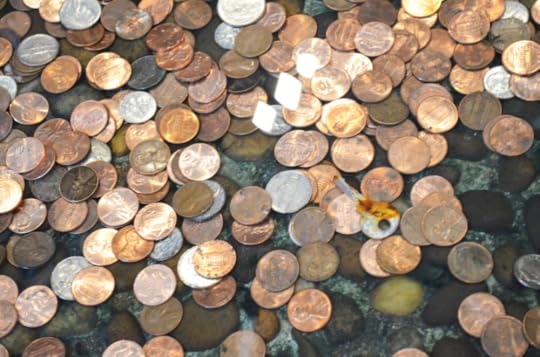
Kids aren’t born with a natural urge to throw away money, of course - they’re taught it from an early age. Very small children, unaware of the practise, are taken to pools in shopping malls and asked: “Do you want Mummy to give you some money to throw in?” It isn’t just pennies that are thrown away – you see plenty of 50p, £1 and £2 coins littering the tiled bottoms of these pools.

It probably all started with wishing wells, sacred springs and 'lucky' fountains, which originated from the earlier pagan concepts of appeasing deities and water spirits and asking for their blessings and assistance. The Trevi Fountain in Rome even has its own catchy song about throwing in money, but these days, the water where most people throw away their cash has nothing to do with famous fountains or special wells. They now throw their cash into literally ANY manmade pool.

Zoos and animal parks have to erect warning signs around water, but they're wasting their time. Just look in the bottom of any penguin enclosure.
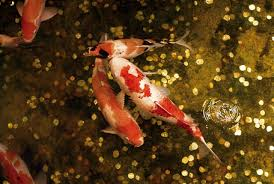
Leeds has a visitor attraction named Tropical World and the fish ponds there are two inches deep in cash. This is despite the many notices pleading with visitors to not do this as the copper harms the koi carp and other animals. Will we see signs one day that say: Please don't burn any paper banknotes in here as it could activate our fire alarms?
People no longer make wishes when they throw their money into water. I asked one girl why she did it and, with a shrug, she admitted she enjoyed it. I asked if she made a wish and she just looked bemused.
Weirdly, the ponds HAVE to be man-made. People will throw their cash into a natural pond, but it needs to be a small one; a pond up to some unspecified size. Most natural bodies of water – seas, lakes, large village ponds and suchlike – are a definite no-no, as tossing your coins into these would leave you feeling stupid; it would feel like you were, ahem, literally throwing away your money. Swimming pools too are out of bounds, but every other man-made pond is fair game.
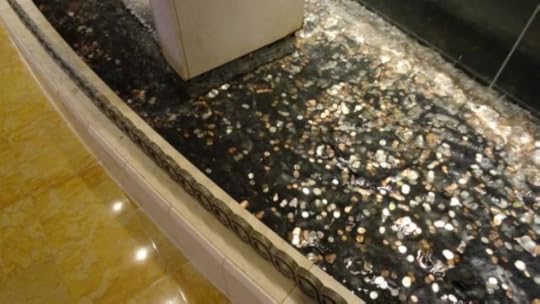

I took these pictures in a Las Vegas casino where, after giving most of their money to the croupiers, the punters still had enough left to throw away into the countless decorative lagoons. Every indoor pool in this place was filled with cash and, in one, I got up to $50 before I finally stopped counting the larger denomination coins. Throwing away money is a pretty weird thing to do in itself, but how weirder is it when you're surrounded by hundreds of slot machines? Instead of tossing your coins into the water, you could feed them into any one of these machines and possibly win yourself a fortune.
Knowing how people are compelled to throw their money into man-made water features, why doesn’t every pub beer garden have a pond or a wishing well? Landlords are really missing out if they don’t do this. It wouldn't matter how much beer they sold - they'd make a daily fortune in tossed coins.

Every week, usually in the early hours of the morning, the Rome authorities shovel all the coins out of the Trevi Fountain and the annual staggering amount retrieved is in the region of two-million Euros. This is supposedly given to Italian charities, but what happens to all that money in ‘normal’ fountains and pools? Who owns it? If we see loads of cash in a shopping centre fountain, does it belong to the centre, is it still the property of whoever tossed it in (they may return for it), or can we wade around scooping up these discarded coins?
I once rolled up a sleeve, retrieved a £2 coin from a pool in a garden centre and pocketed it, much to the disapproval of two tutting women who were watching. Perhaps they thought that, now I’d removed the coin from the water, the magical wish would no longer come true for the hopeful person who threw it in – perhaps their grandson would remain in that coma.
Much to the horror of conspiracy theorists, we seem to be heading towards becoming a cashless society. If this should ever come to pass in the future, our days of throwing away money like this will be over. I look forward to seeing contactless pay points around every pool in every shopping mall and garden centre, where visitors can tap their bank card to deposit a pound as they pass.

January 14, 2022
A BLOGLIN – A BLOG ON BRITAIN’S FAMOUS TALE OF THE UNDEAD - THE CROGLIN VAMPIRE.

Croglin is a tiny settlement in the wilds of Cumbria, nestling in the beautiful Eden Valley some fifteen miles north of Penrith. This remote village is the site of Britain's most famous vampire legend which took place at Croglin Grange, or Croglin Low Hall as it’s now called.
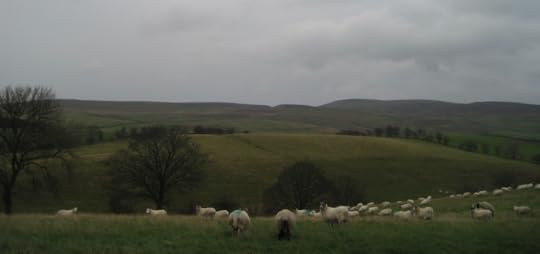
I first came across the story when I was around ten years old and it absolutely scared the shit out of me. It featured in Weekend, a UK magazine of the 1970s which always contained at least one supernatural story in every issue. I visited the village again recently to take photographs.
Augustus Hare first told of the Croglin vampire in his autobiography, the Story of My Life, and portrayed it as completely true. Hare claimed that someone named Captain Fisher had told him a “really extraordinary story connected with his own family.”

Hare's story goes…
The Fisher family had had a longstanding presence of several hundred years in Cumberland at a place called Croglin Grange. The family eventually grew out of their house. Thus, they decided to relocate to the south. But instead of leaving their property vacant, they chose to lease it out to paying tenants. The Cranswell siblings – two brothers and a sister – took up residency in the single-story farmhouse.

Winter came and went without incident. The following summer was a muggy one. On one oppressively hot night, the tenants took the opportunity to watch the moon before finally turning in. The sister, Amelia, lay on her bed on top of the covers and closed the bedroom window. The shutters remained unlocked, though.
Unable to settle down to sleep in the heat, Amelia gazed out of her window. A church, complete with its own graveyard, stood beyond a line of trees. Her eyes caught a glimpse of something concealed in the twilight. Two flickering lights seemed to be moving among the copse of trees visible from her window. She was intrigued at first, but the longer she watched, the more nervous she began to feel. In a moment, both lights started to emerge from the treeline and into view. It looked as though the lights were a small part of a more substantial form – a human form.
As the figure approached the grange, the startled and terrified young lady suddenly found the compulsion to act. Amelia raced to the door, arriving just in time to unlock it. It seems as though this was not a moment too soon. As she fumbled at the lock, Amelia could hear a scratching sound coming from her bedroom window. Despite her growing terror, she dared one look backward. Standing outside the window, almost filling it, was a hideous face that had fierce glaring eyes. Bony fingers made efforts to open the window for a couple of seconds before stopping.
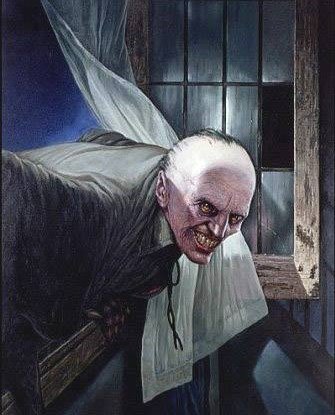
A new noise made Amelia freeze with even more fear. Whatever was outside was now picking at the lead seals of the window. No sooner had this sound rendered her immobile, then another made her blood run cold. The window pane fell out, and one arm levered in to open the window from the inside. Unable to move or even raise an alarm, the thing moved quickly and was beside her in moments, teeth nestling into her exposed neck. Now she felt able to scream.
Her shrieking alerted both of her brothers who came to investigate. After breaking down her door, the invader fled back the way it had come. Amelia’s brother took up the pursuit, but he was no match for the giant strides of the creature. It disappeared beyond the wall of the churchyard. Amelia was bleeding quite heavily but passed off her attacker as an escaped convict from a lunatic asylum.

Given her ordeal and the fact that she regarded herself as a girl with very little superstition, it was perhaps an understandable conclusion. Amelia did recover from her wounds but needed to recuperate. The three of them went to Switzerland so that she could completely recover. While there, Amelia yearned to return to Croglin Grange. Despite the events that took place, she and her brothers still liked the area, and they were popular among the other residents. The decision was Amelia’s, and she decided to return, insisting that lunatics do not escape every day of the week.
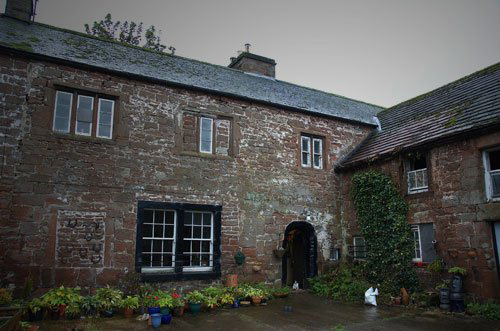
When they returned home, they spent another placid winter in Croglin. It was during the following March that Amelia began to hear the unmistakable scratching at her window once more. This time, she acted promptly and decisively, screaming for help before the same creature from before managed to gain access to her room. Both of her brothers responded quickly, only this time they were armed. Her screams also forced the creature to flee, and it was heading back the way it had come when one brother took aim and fired. Despite being hit in its leg, the monster still made an escape. Only this time, the brothers were able to track it. The beast had taken refuge inside a crypt that belonged to a family from the area.
The brothers decided against entering the crypt at the time. Instead, they would gather a posse and investigate at daybreak. When they opened the tomb the following morning, they discovered several coffins. Only one of them was intact, but the lid was ajar and laying loosely on top of it. Inside was a corpse with a fresh bullet wound in one leg. They removed the body, brought it outside the crypt, and lit it on fire.
So ends the tale of the Croglin Vampire.

The weirdly eccentric Montague Summers fully believed in vampires, werewolves witches and Satanists – the sort of wealthy Satanists found in Dennis Wheatley novels, not the teenage nutters who desecrate graveyards. He knew the undead were everywhere and included the Croglin story in his 1929 reference book, the Vampire in Europe. By the way, Wheatley knew Summers and based his Canon Copely-Syle character on him.
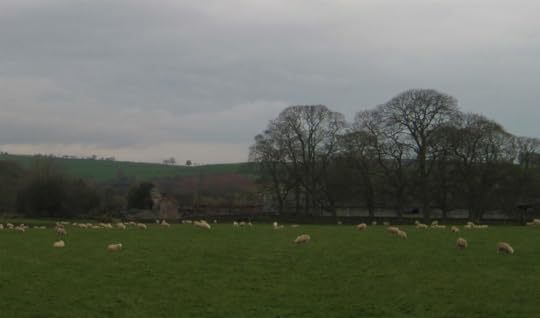

Not convinced with the story, writer Charles Harper travelled to Cumberland and discovered, although there was no such place as Croglin Grange, there was a Croglin Low Hall. According to Harper in his 1907 book Haunted Houses, “Croglin Low Hall is probably the house indicated, but it is at least a mile distant from the church, which has been rebuilt. The churchyard contains no tomb which, by any stretch of the imagination, could be identified with that described by Mr. Hare.”

The story was challenged by another researcher, F. Clive Ross, in the 1930s. Ross interviewed the locals and decided that Croglin Low Hall was the Croglin Grange of the legend. The Grange did have a chapel on the grounds, which was built on the foundations of an earlier church. One of the locals that Ross interviewed was a Mrs. Parkin who had known a descendant of the Fisher family. Mrs. Parkin indicated that he was born in the 1860s and knew the vampire story from his grandparents. The lady also revealed that the deed to the property stated that until 1720, Croglin Low Hall was Croglin Grange. All the above photos are of this house.

Fortean journalist Lionel Fanthorpe conducted a more recent investigation into the authenticity of the Croglin Vampire. His results suggest that some events could be genuine. Fanthorpe believes that someone demolished a grange, or farmhouse, during the lifetime of Oliver Cromwell. If the story is true, then it is much more likely to have taken place sometime in the century before the deed was altered.

The village sign on the outskirts of Croglin. It's good to see that, since the supernatural attacks, the locals have seen fit to sort out protection in the form of a neighbourhood watch.
As I mentioned, this story scared me as a child, especially the part where the creature gained entry to the house by picking out the window lead with its long fingernails. Film director John Badham was obviously well aware of the Croglin legend and used it in his 1979 version of Dracula starring Frank Langella.



I’m told that the village pub, the Robin Hood, has framed pictures and a write-up about the vampire, but to be honest, I’ve never managed to find the place open on my visits. These visits have always taken place during daylight hours, so I'm sure it's a great spot to drink and socialise after sunset.

Walking behind the Robin Hood one cold afternoon, I came across a nervous local who was just beginning to give me some whispered information when THIS character in the flat cap appeared and angrily hissed at him: “That's enough. That's ENUFF.”

January 9, 2022
COTTINGLEY - A BIT OF A FAIRY STORY

There are only two places in Britain named Cottingley and, for some bizarre reason, they’re just fifteen miles apart from each other in Yorkshire. If you’re planning a visit, make sure you get the right location.
One Cottingley is a large council estate on the edge of Leeds, the other is a little suburb off the A650 next to Bingley, a few miles northwest of Bradford. The original old village is on the southern side of this, a lovely cluster of sandstone terraces and buildings around a wooded glen with a rocky stream of cascading water. Just over a century ago, this woodland beck provided the place with worldwide recognition.
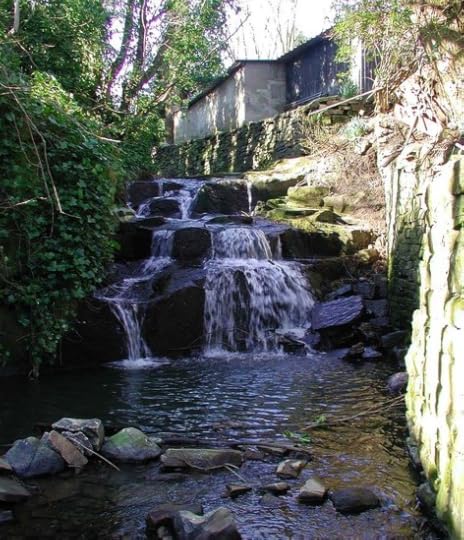
Just as it’s difficult to think of Loch Ness without thinking of the word ‘monster’, or Boris Johnson without thinking of the word ‘twat’, most folk can’t think of Cottingley without adding a certain word to the name. I hadn’t visited the place for a few years, so I called there recently to take some photos - and photographs are the main reason for Cottingley’s fame.

In 1917 two very famous black-and-white pictures were taken beside the stream, followed by a further three in 1920. These were published, firstly in the Strand magazine, and then in newspapers and periodicals around the world. They were, of course, the wonderful pictures of the Cottingley Fairies, supernatural sprites that lived in the woodland around the tumbling water.
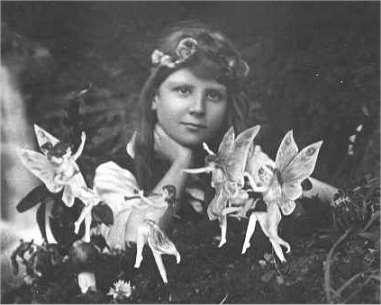

The later three taken in 1920.
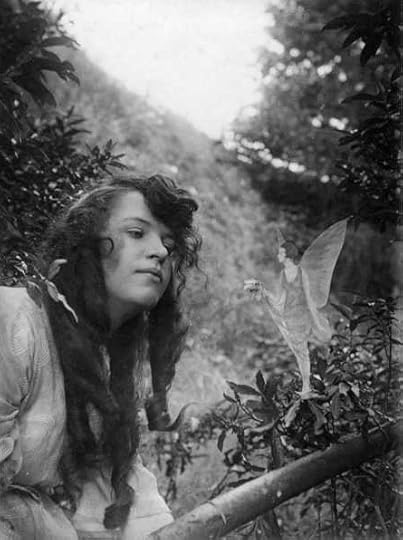
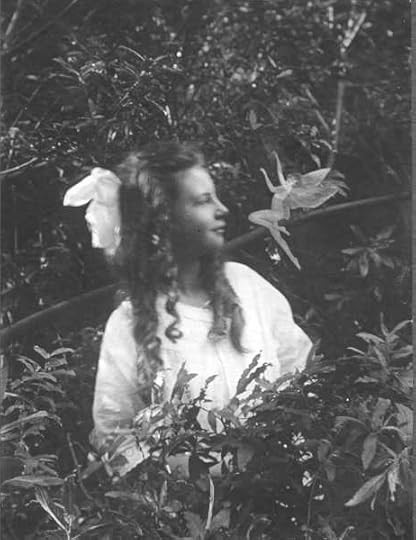

These fairies were quite friendly and on first name terms with their photographers, Elsie Wright, a 16 year-old girl, and her 9 year-old cousin Frances Griffiths, who was staying with the family in their end-terrace house on Main Street. Cottingley Beck ran along the bottom of the garden and the two children borrowed Mr Wright’s camera to go photograph the fairies that they saw there all the time. A rare shot of Elsie and Frances taken by the water WITHOUT any fairies.
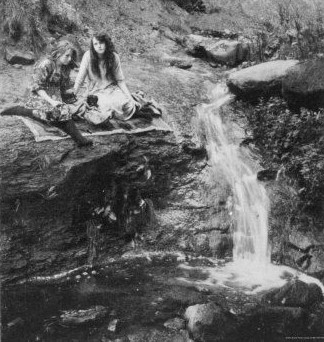
The Wright family home on Main Street, the rear of the house, and the attic bedroom shared by the two girls.
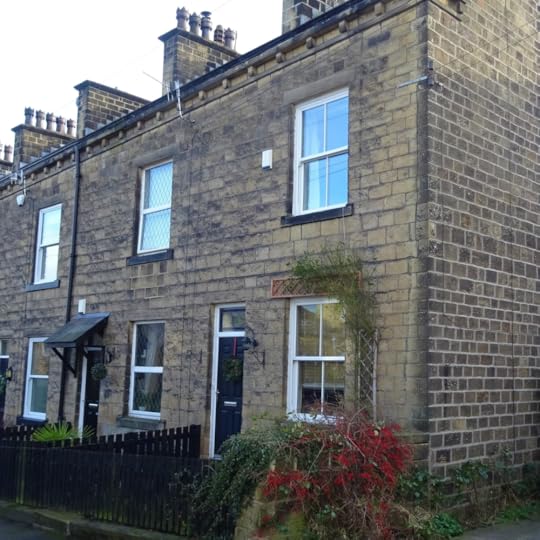


The pictures were fakes, unfortunately, a sweet little joke conceived by the children using small cut-out pictures and hat pins, but they convinced many photographic specialists and other intelligent ‘experts’, including the spiritualist Sir Arthur Conan Doyle, who became certain that here was conclusive proof of the ‘other world’ that he’d always dearly wanted to believe in.
Although it was a hoax, it was a light-hearted one, and Elsie and Frances had never intended it to go any further than making their family smile. Sherlock Holmes author Conan Doyle was the problem. The moment this great man claimed the pictures were genuine and published his book, the Coming of the Fairies, the girls couldn’t back down.
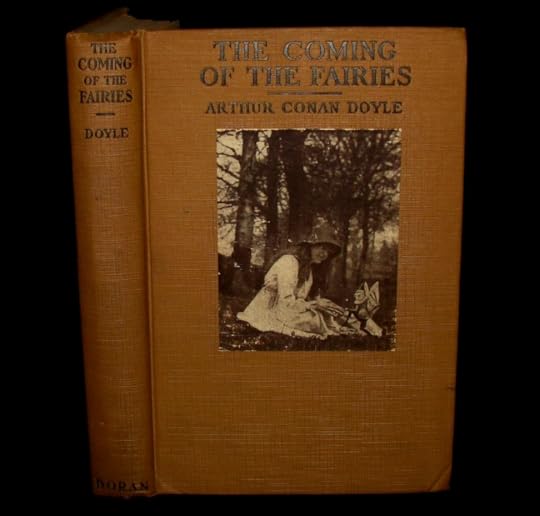
Embarrassed and guilty, they couldn’t possibly admit to their prank and make such an important and revered writer look foolish. Consequently they decided to stick with their ‘fairy story’ for decades.

In the 1970s Professor Joe Cooper became involved. Joe was a Yorkshire writer, astrologer, psychic investigator and sociology lecturer at Leeds University. He befriended Frances and Elsie, who were now elderly ladies, and became obsessed with their story. He wrote his own books on the fairies and eventually, in 1983, famously got the two women to admit their prank to him. The shock of discovering it was all a hoax pretty much ruined his health and marriage. It led to some weird headlines such as: ‘the Curse of the Cottingley Fairies’ and ‘the Cottingley Fairies Killed my Father’.
I met Joe a few times in the 1980s and he always seemed a really nice character. We were once in a house where he went around a large room of strangers ‘guessing’ everyone’s star sign and pinpointing their date of birth, either exactly or to within a day. He claimed this was no trick, but simple astrology. Now I’m sure Derren Brown could probably do something very similar, but this is still the one and only bizarre thing I’ve ever seen that I couldn’t explain (and I’ve seen quite a lot).
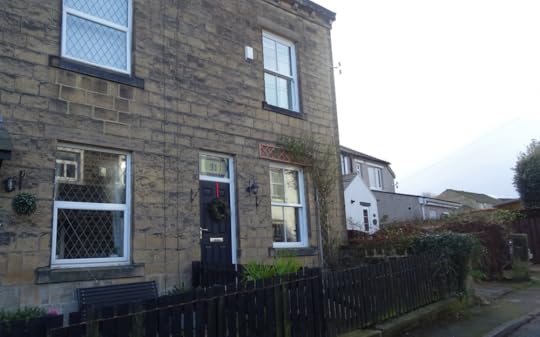
Coincidentally, the house is now owned by the fantasy artist and graphic novelist Luke Horsman. Although he’s painted a few fairies in his time, he was completely unaware of the house’s history when he bought it a couple of years back.
The photographs have now been immortalised as an excellent series of large metal sculptures which you can find in the small park on Manor Way by the village community centre.
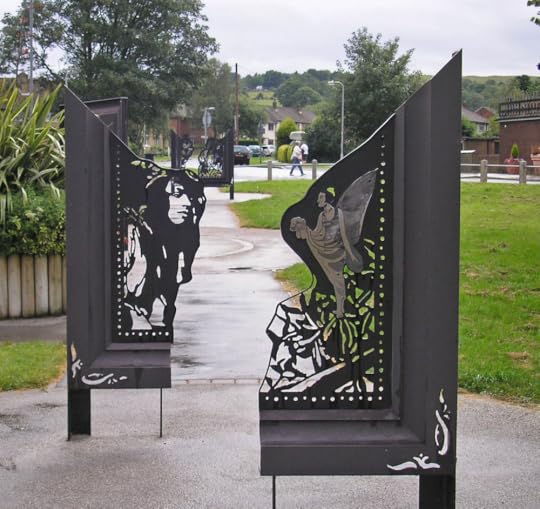
The best way to see Cottingley Beck and the site of the photographs is from the bridge on Lysander Way and the surrounding woodland. There are some great street names in the new housing development next to this, although it helps if you’ve read A Midsummer Night’s Dream.

September 14, 2021
GLOBAL WARMING - HIT OR MYTH?

With all the recent wildfires, flooding and other planetary catastrophes, the media is once again filled with horror stories of global warming. As usual, a percentage of the population (including some world leaders) don’t believe a word of it. Strangely, these are often the same people who knew the moon landings were faked, and the Covid pandemic was a plot by Deep State to control us all.
Fundamentalist Christians are gleefully rejoicing, claiming (as they’ve claimed for hundreds of years) that we’re now living in the ‘End Times’ – the ‘End Of Days’ – and they point out how the Bible tells a very similar story. The population back then disbelieved Noah when he warned them of the coming disaster and they were all destroyed.
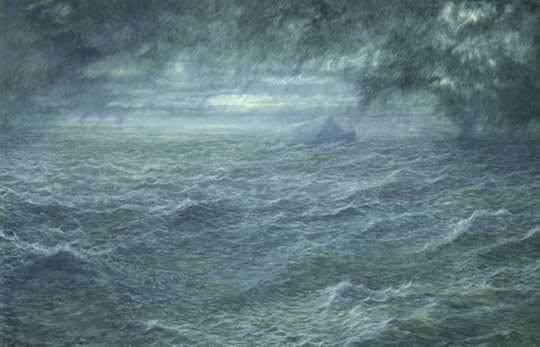
With global warming now a reality, perhaps we should look into this earlier flood and see if we can learn something to our advantage. The history book used by fundamentalist Christians, the Bible, describes the lead-up to this worldwide disaster. Basically, it can be condensed to this - just over four-thousand years ago, God created absolutely everything and made two perfect people who were without sin. This couple then disobeyed their creator by eating some fruit and, because of that, every baby born afterwards was a sinner.
Shortly afterwards, God became really annoyed by all the corruption he witnessed in humanity and, in a peculiar decision, killed everything on Earth with a huge flood - even the children born on the morning of the flood were corrupt and had to be drowned. Plus every animal lifeform too, creatures which had no concept of corruption and evil.
Being omnipotent, one wonders why he didn’t simply click his fingers and change every corrupt person into a non-corrupt person. He could even have just made them vanish, thus negating the need for a flood or a huge boat, but as we know, he works in mysterious ways and instead decided to drown everyone and everything.

Fortunately Noah’s family of eight people weren’t corrupt (the only non-corrupt people on earth) and God saved them to repopulate the planet, warning Noah about the coming flood and ordering him to build a huge boat. Unfortunately, the babies born to Noah’s family in the following years were still born with sin inside them and that’s the situation we have today. As we’re all descended from this one family, we’re ALL born with sin. The solution is simple. With our knowledge of DNA, scientists could isolate and remove the sin from our genetic structure and we’d finally have innocent new-born babies without sin, but that’s an idea for another day. This blog is about the Biblical Flood and there are various questions that need answering.

Firstly, the water. Everest stands five and a half miles high and the Biblical waters covered this mountain. That means the entire planet was submerged beneath water more than five and a half miles deep. That’s quite a LOT of water. The deepest part of our oceans, the Mariana Trench, is seven miles deep, and submarines can only dive to a depth of around 3000 feet before the intense pressure begins to crush their steel hulls. Where did all this water come from and, perhaps more to the point, where did it all eventually vanish to?

Also, was it fresh water or saltwater? Freshwater fish and freshwater creatures can’t live in salt and vice-versa, so Noah would have had to construct thousands of tanks on board his boat to house the unlucky ones. I’m guessing the water covering Earth was salt, otherwise he’d need to take two of every whale species on board and that would require a much bigger ark than the one described in the official account.
I feel we need to address such points if we’re ever going to take this episode in our history seriously.
No one ever mentions the vegetation. How did all those countless millions of plant species on our planet survive after being submerged for over a month beneath five and a half miles of saltwater? If the pressure crushes steel submarines at 3000 feet, what would happen to, let’s say, an orchid after being subjected to five and a half miles of pressure for over 40 days?
No one is quite sure how Noah collected together all those creatures to save on his ark – the pandas from China, the kangaroos from Australia, the lions from Africa, etc. Our friends, the fundamentalist Christians, suggest that back then every animal species lived in the Middle East (basically within a few miles of the ark) and they only spread around the globe AFTER the flood. You have to ask yourself what WAS Noah thinking as he chose those animals?

He was told to take EVERY species on earth, but he left behind all the really cool dinosaurs, the mammoths, sabre-tooth tigers, giant sloths and unicorns (yes, there are unicorns in the Bible). Instead, he took some of the most bizarre shit imaginable – Syphilis, smallpox and cholera germs, the Ebola virus, vaginal yeast, those necrotising flesh-eating bugs, pubic lice, and the tiny maggots that burrow into the eyes of African children and blind them. You have to wonder how he managed to collect all this microscopic stuff and contain it during the voyage (before glass test tubes). You also have to wonder about the divine being who created it all in the first place.
Sceptics (like scientists, and people with common sense) ask how Noah obtained (and kept fresh) all the meat, fish, insects and other food from around the world for his creatures with specialist diets - ants, rare beetles and grubs, nectar for humming birds, etc, etc. Some Evangelists claim that, before and during the flood, everything must have been vegetarian. Wouldn’t it be easier to just say that everything lived on a diet of saltwater?
Again, we don’t know where the water disappeared to – that five and a half miles deep covering of water - but when it finally DID recede after 40 days, Noah’s Ark came to rest on the top of Mount Ararat in modern-day Turkey. He opened up the door and let out all the animals onto their new empty world.
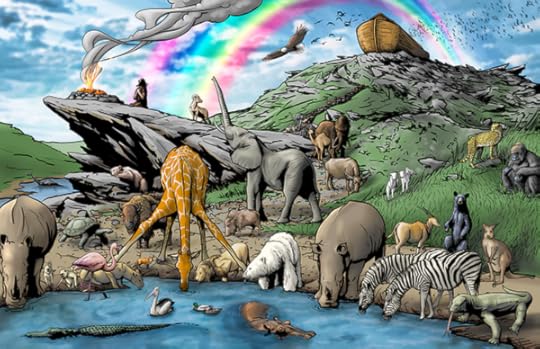
What did the hordes of carnivores eat? The only available food on the entire planet walked out of the ark with them onto that same tiny bit of dry land. Surely, as the hunger pangs developed, the two lions would soon eat the two wildebeest, the two leopards would eat the two wild boar, the two lynx would eat the two springboks, and so on, and so on, and so on. Eventually the carnivores would run out of normal herbivore prey and turn on each other. I estimate that, after about six months, the only wildlife left on planet Earth would be one big fat tiger.
As every fundamentalist Christian knows, the flood definitely happened, so there’s clearly an explanation as to why we still have our vast diversity of wildlife.
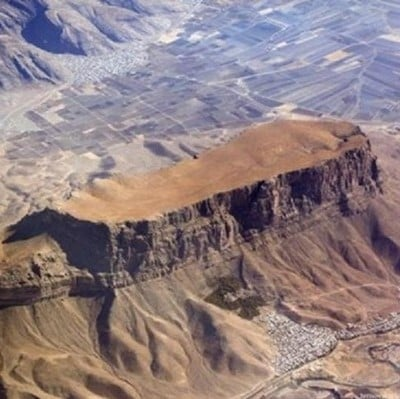
For many years now, expeditions have been trying to find the remains of the Ark on Mount Ararat, and also the lost Ark of the Covenant from the Bible. They never seem to succeed in their quests, so why not just search for easier arks? The Ark Royal is at the bottom of the sea off Gibraltar, and an even easier one to find is the Arc de Triomphe, right in the heart of Paris.
Many Christian fundamentalists are certain that dinosaurs, like every other creature, were created by God 4000 years ago. They were saved by Noah on the ark, and lived alongside man until they died out like the Dodo a few hundred years back.
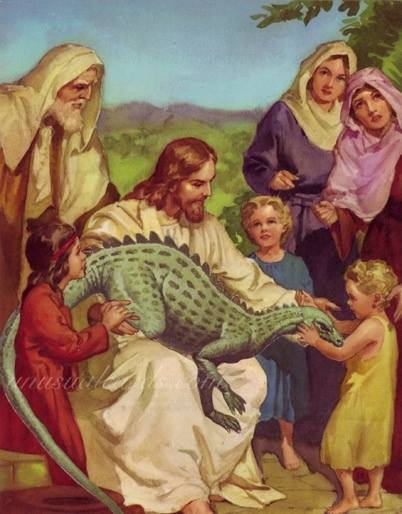
A full-size 'replica' of the Ark has recently been built by Evangelists in Kentucky, but as they know it to be historical fact, why on earth didn't they construct it as per the Biblical description, which is basically a big wooden shoebox? This one resembles a boat.

To finish, many faith schools in Britain (funded by American Evangelical groups) teach that the Bible is the word of God and EVERY word is true. They teach that the Creation is historical fact. More to the point, they teach our children that the story of Noah, his Ark and the flood actually happened.
May 10, 2021
IS THERE ANYMONEY THERE?
Advice for spirits in the afterlife who wish to contact the living.

One of the central characters in my novel Badda Moon Rising is a fake clairvoyant who witnesses a crime one evening and realises he has a choice. Simply reporting the incident will make him a mundane eyewitness, anonymous and quickly forgotten, but passing the information to the police as psychic visions will take him down a different path, hopefully leading to the kind of fame enjoyed by the top stage psychics such as Sally Morgan, the late ‘scally conman’ Derek Acorah, and Bride of Chucky lookalike Theresa Caputo.
Needless to say, this fictional character takes the latter route, but this got me thinking about those ‘genuine’ stage psychics and also how spirits should approach them after death. I’ve come up with a few bits of simple advice for any dead people thinking about contacting their loved ones in spirit form following the funeral.

Firstly, do you really need to contact them as a spirit?
It makes sense to do some planning and, if you’re terminally ill, why not tell your loved ones everything you need to tell them before your death. This way, they won’t have to spend huge amounts of cash on psychic mediums in order to speak to you. Many mediums charge BIG money for their ‘special gift’, often ‘earning’ more per hour than doctors and lawyers. Most of the famous ones are millionaires several times over.

If, however, you didn’t bother saying everything prior to your demise, or indeed, you died suddenly, your loved ones may well want to contact your spirit. Your grieving partner will probably visit a draughty hall in Doncaster or Crewe, along with two-hundred other women, where a psychic medium will take to the stage, charging anything between £15 and £40 each for a ‘show’ of two 45 minute slots. If this is the case, give some thought as to how you’ll introduce yourself to your loved one through this psychic. This is very important and prevents the medium from looking like a fake in front of their audience.

Let’s imagine you’ve descended from the astral into one of Stephen Holbrook’s nightly shows. When you try to contact your partner through Stephen, don’t just give him a letter…
If you do, he has to say: “I have someone here beginning with M, or possibly N...”
Why on earth would you do that? If you had no interest in word puzzles when you were alive, why start pissing about with them when you’re dead?
Also, don’t just say: “it’s David”. What possible use is that without a surname? Telling his audience he has someone named David for an unspecified person, makes psychic Stephen look like a fake who’s using the cold reading technique of ‘fishing’. Tell him specifically who you want to contact, not that you're there to speak to “someone”. He’ll connect you far quicker if you say:
“This is David Jessops for Amy Jessops at the front there in the blue woollen coat.”
Yes, the location of your loved one is also important. It’s always good practise to tell the medium where they’re sitting...
“The lady I want to speak to is Janet Matthews in the cream-coloured raincoat to the left of the door back there”.
It saves Stephen having to vaguely indicate to half the auditorium, saying: “I have a David for someone in this right half of the room… or possibly the left.”
Again, this makes Stephen look like a fake who’s fishing, so DON’T do it.
Once you get chatting with Stephen, you can mention someone in a uniform (all spirits seem to be very keen on this) and remember to make vague references to someone with a bad back, pets, a favourite song, and a faulty vehicle or household appliance. The good thing is, once you’re over the initial name hurdle, everything seems to flow just fine…
“He’s telling me how he loved his holidays on the coast. Er, where was it again?”
“Blackpool.”
“That’s right, Blackpool. He says you both loved it there, but oooh, do you remember that time it rained and how wet you both got? You were soaked, weren’t you? And he did like his fish and chips, didn’t he? He’s telling me how he always asked for scraps and told them to put plenty of salt and vinegar on. You remember that, don’t you? He says you had a favourite song that always reminded you both of Blackpool. He’s saying it was… It was… it was…”
“Smile, by Lily Allen.”
“That’s right, Smile, by Lily Allen. And he’s saying that’s what you should always do when you hear it. You should smile and think of him. Hey, good times, lass, he’s saying. They were good times, weren’t they?”
The thing is, once you spirits start, it’s difficult to shut you up, but first you need to start and overcome that initial name hurdle. Remember to always give the clairvoyant your name, not a letter, and most importantly, to give them your surname.

This is all simple enough and, to be honest, rather obvious advice, but If you can’t follow it, don’t worry too much. Neither can any of the other dead people who ‘connect’ with stage mediums in the UK.
March 20, 2021
IS THERE ANYMOGGY THERE?
I wonder if anyone can help on the subject of animal spirits and pet hauntings?

In the 1980s, I used to know a girl named Linda who worked as a ‘psychic’, enabling people to speak with their dead loved ones for money – at the time, she charged £30 for thirty minutes. She’d explain to clients how their beloved pets had spirits too, just like humans, and their dogs and cats would sometimes remain with them ‘for a while’ after their departure. Linda had a colleague who operated as a Pet Psychic and she’d put her own clients in touch with this person if need be.
The pet spirit scenario was ‘proven’ beyond doubt when Linda’s own cat Mitch died, but its spirit continued to ‘live’ in her house for several months. She often saw the ghost cat walking around the rooms and garden, she sometimes heard it mewing and purring. Most comforting of all, she'd feel it in the bedroom at night as it jumped onto the bottom of the duvet and settled itself down, much as it had done most evenings during its life.

The strange thing was, Mitch didn’t die in the house, but in a veterinary surgery several miles away where he was sadly ‘put to sleep’ for medical reasons. I wondered at the time why his spirit wasn’t haunting this building instead of Linda’s home, but there was a weirder and, I thought, far more obvious question.
Linda had spent the previous decade cleaning up the corpses of all the local wildlife that Mitch had helpfully brought in. During the nesting season, when garden birds need to take more risks to find food for their chicks, her cat would snatch countless robins and tits, bringing them in to torture to death on her carpet. Hundreds of birds, mice, voles, and even young rabbits had been systematically torn to pieces in her house over ten years, yet she never once saw or heard any of their spirits.
I mention the gruesome manner of their departure because many paranormal investigators believe a sudden nasty death results in a lingering spirit, more so than a contented soul passing away in a bed with the family around them.

Is there a scientific reason for this, or is it simply that ‘psychics’ don’t have the imagination to think beyond dogs and cats? We never seem to hear of spectral hamsters, pythons, or ghostly goldfish still swimming in pathetic circles in the air above the table where their bowl used to stand. If dogs and cats have spirits, then surely so must all the other creatures?

Another friend of mine owns a small baker’s shop in York. During the summer months, when his door is open to the public, the wall-mounted electric fly zapper constantly sizzles flying insects to death. One of his regular customers is a lady psychic who often talks about all the spirits she sees, but she’s never pointed out the eerie cloud of ghost flies that, by now, must annoyingly fill his shop. Transparent dead mice must constantly race past her feet too, courtesy of his rodent poisoning boxes, but these never get a mention either.
Why is this? Is there an official paranormal explanation?



